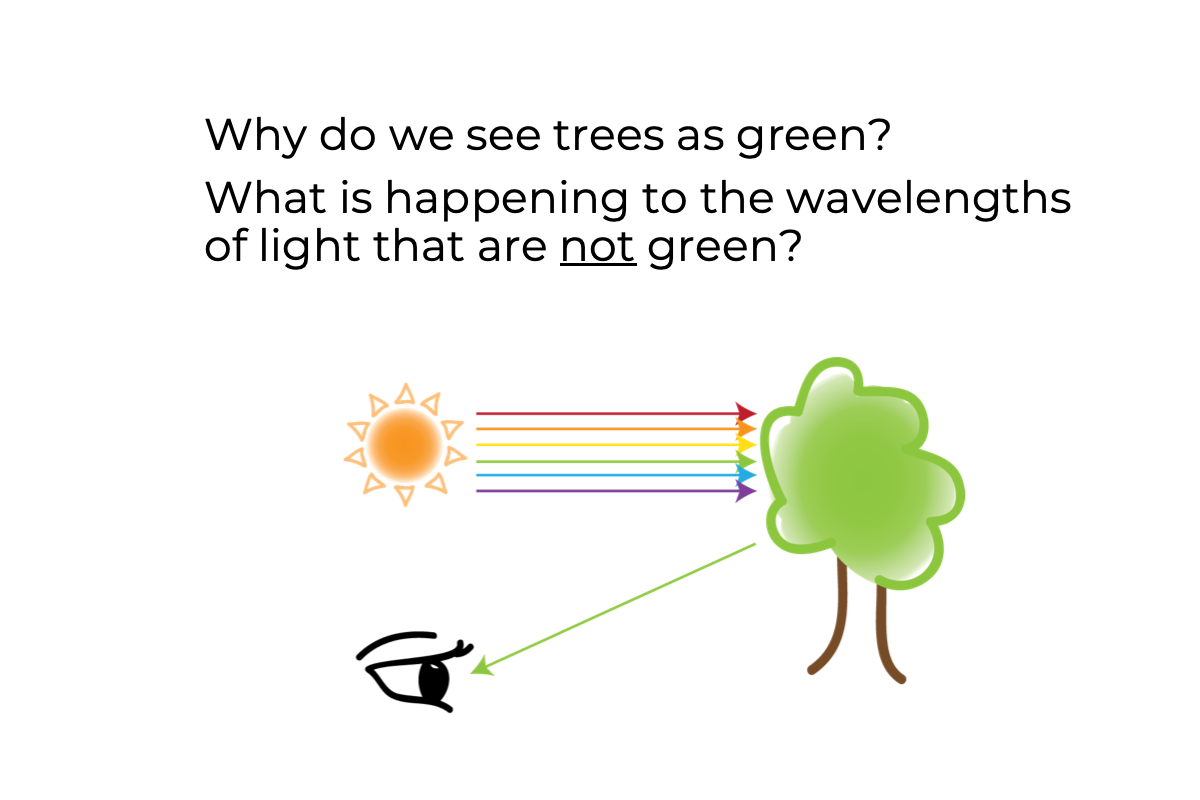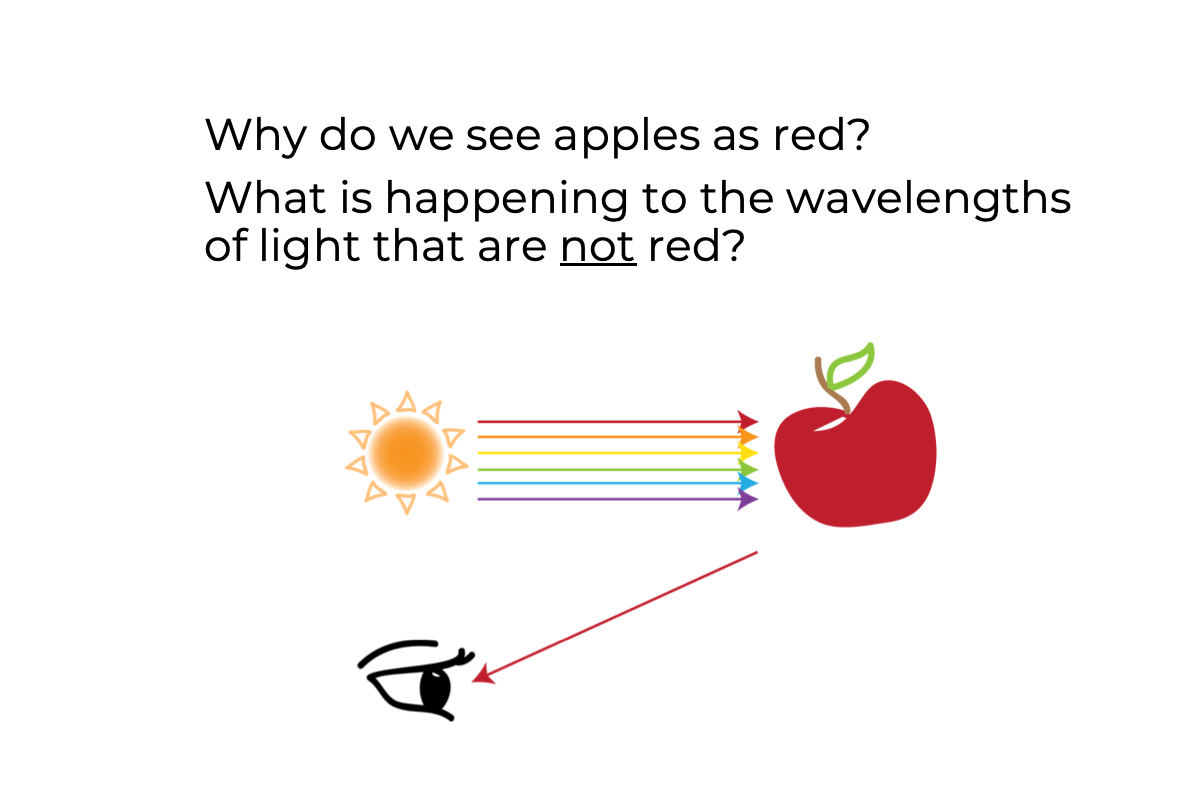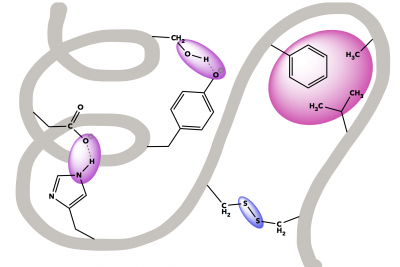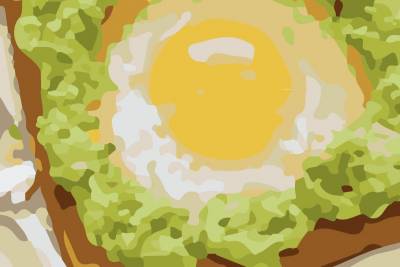Colorful Leaves
Background: Dyes and pigments
Plant cells contain chloroplasts, and chloroplasts contain chlorophyll, a green pigment. There are other pigments in plant cells, but much less than the chlorophyll.
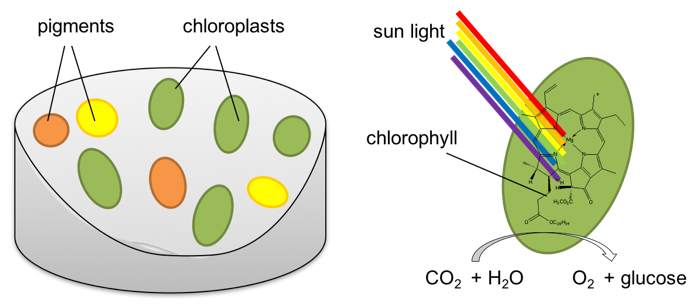
Chlorophyll absorbs light in the blue and red region of the electromagnetic spectrum and plants use the energy from the light they absorb to catalyze a reaction of carbon dioxide and water to form oxygen and glucose, this is called photosynthesis. They release the oxygen into the air and use the glucose, a sugar, as food.
Materials
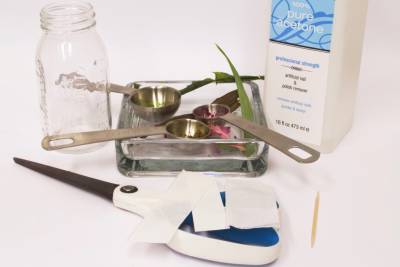
Corner Store Items
- A medium sized jar (approximately 10-12 cm tall)
- Binder clips
- Toothpicks
- Nail polish remover or rubbing alcohol
- Paper towels
- Pencil
- Ruler
- Saran wrap
- Scissors
- Wooden skewers
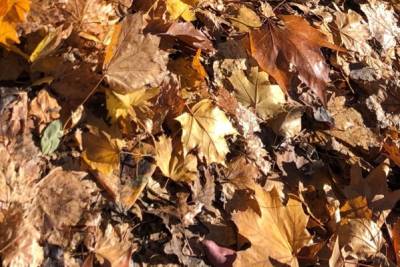
Outside Items (Environment)
- Leaves, preferably both green and fall-colored leaves
Procedure
There are two ways to do this paper chromatography experiment. Students can either soak their entire paper strip in the plant-solvent mixture or can place a small dot of the solvent onto their paper strip.
*From our experience, soaking the entire paper strip in the mixture resulted in the most optimal experimental outcome, however, please feel free to try either (or both) protocol(s), and let us know which you prefer!
Extract Bath Method
-
- Place your plant sample into a small jar and add enough nail polish remover (solvent) to cover the leaves.
- Combine the plant sample with the solvent until a rich pigment appears. **Let it soak in for about 10 mins**.
- Another way of extracting rich pigment is to place the mixture into a hot water bath for about 3-5 mins.
- Cut a paper towel strip to the dimensions: 10cm (length) x 2-3 cm (width)
- Secure the paper towel strip to the binder clip and affix the wooden stick through the metal hole of the binder clip.
- Place the skewer (along with the binder clip and paper strip) on top of the jar.
- The strip should be inside the jar, with bottom (1-2 cm) soaking in the mixture.
- Make sure that the paper towel strip does not come in direct contact with the sides of the jar.
- Observe as the mixture runs up the paper!
- The pigment should separate into its different components as the solvent and sample mixture travel up the paper.
- This can take up to an hour!
Extract Dot Method
- Place leaf samples into a small container and grind until a dark green color appears (1-2 minutes).
- Adding small amounts of water may help the leaf pigment appear!
- Layer a paper towel vertically, against one side of a clean jar.
- This will allow the paper towel to absorb the solvent and slow the evaporation of solvent; thus serving as a wick.
- Add approximately 1 cm of nail polish remover (solvent) to the jar, and let sit for 10 minutes.
- Cut a paper towel strip to the dimensions: 10 cm (length) x 2-3 cm (width)
- Use a pencil to mark the paper towel strip approximately 2 cm from the bottom.
- Use a toothpick (or a coffee straw) to extract a small sample of the leaf mixture, and drop it onto the pencil dot.
- Let the moisture surrounding the pigment dot dry for a few minutes and when it does, add more pigment (leaf extract) to the center.
- Repeat this step twice to ensure that the pigment concentration in the middle of the dot is defined.
- After the mixture has dried, secure the paper strip with a binder clip and affix the wooden skewer through the metal hole of the binder clip.
- Rest the skewer (along with the binder clip and paper strip) on the top of the jar and insert the strip into the nail polish. Make sure that the paper towel strip does not come in direct contact with the sides of the jar.
- The portion of the paper strip below the pencil dot should be submerged in the solvent.
- *The sample dot should not touch the nail polish remover (solvent).*
- Loosely cover the top of the jar and the skewer with saran wrap.
- Observe as the solvent travels up the paper and separates the pigment into its components!
- In order to see how far the solvent has traveled, mark the end point on your paper towel.
- After it dries this becomes difficult to see!


